Does fair trade work? Fair Trade Movement Progress and Opposition
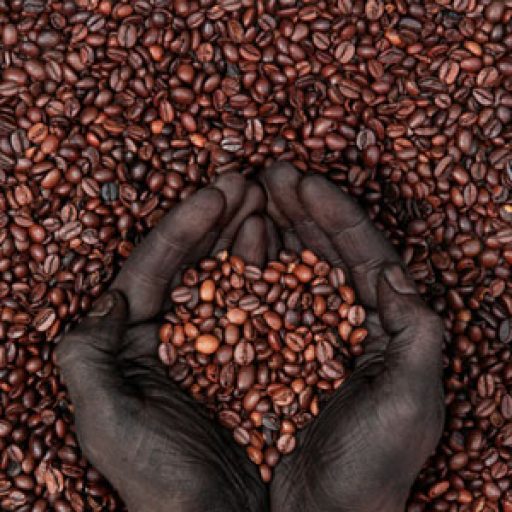
For professional baristas, please follow the coffee workshop (Wechat official account cafe_style)
About fair trade
The author believes that the most appropriate paragraph to explain the concept of fair trade is Ms. Marlene's words in the book Banana War and Fair Trade: "Fair trade certification is a two-way commitment." Consumers create a way to improve the lives of producers and their families, while producers guarantee to provide accountable and sustainable products. These standards are our values; they show that we are doing the right thing. "
The core goal of fair trade is to "stop the exploitation of third world producers". Respecting producers and land, reducing environmental damage, and allowing consumers to consciously choose valuable products are all the values of fair trade. The means are to help vulnerable small farmers through "guaranteed purchase price" and "fair trade community development fund", and to require them to adopt environmentally friendly and sustainable farming practices. Fair traders promise a "guaranteed purchase price" to small farmers to protect their livelihoods from price fluctuations. The Fair Trade Community Development Fund is used to subsidize small farmers to build infrastructure, or to upgrade education, technology, and so on, so that they can build schools, improve soil and purchase farm tools. At the same time, the mechanism of "Fair Trade Certification Mark" is used to connect producers and consumers to ensure the quality and origin of Fairtrade goods.
When the retail price of a pound of coffee beans in the United States is $12, small farmers in Costa Rica can only get less than $1.30 a pound. Generally speaking, the price of agricultural products is determined by the centralized trading market, but this market with large price fluctuations makes it impossible for small farmers in the third world to survive. The price determined by the coffee futures market does not contain any external costs of protecting the environment, protecting labor and safeguarding justice, and even cannot afford food and clothing for coffee farmers. At a time of falling prices in the global cash crop market, they are poorly paid for growing cash crops such as coffee beans and cocoa. In order to change this dilemma, the International Fair Trade Organization's Standards Review Committee has incorporated reasonable environmental costs and labor costs and set a minimum purchase price (Minimum Price), also known as the "guaranteed purchase price". When the futures market price is lower than this standard, fair traders will still buy products from small farmers at the "guaranteed purchase price". In addition, small farmers must first form "producers' cooperatives" if they want to become members of the Fair Trade Organization. As a collection of many farmers, "cooperatives" have stronger bargaining power and can reduce their dependence on middlemen.
The process of the Fair Trade Movement
The term "fair trade" began around the 1940s and initially focused on handicrafts, but at that time Fairtrade was for the purpose of donation, which is different from today's demands. The Fairtrade slogan "Trade, not Aid" (Trade not Aid) was chanted in Europe in the 1960s, which was the beginning of the Fairtrade movement, which was dedicated to finding markets for vulnerable producers in developing countries. The first "World Store" opened in the Netherlands to sell Fairtrade goods. In the 1980s, when the sale of handicrafts hit a bottleneck, cash crops such as tea and coffee immediately stepped onto the stage of fair trade.
In the process of promoting the Fair Trade Movement, more and more people agree with the concept of "ethical purchase", but Fairtrade goods suffer from the lack of access to consumers. It was not until 1988, when the first Fairtrade label campaign began, that this dilemma was changed. The Fairtrade label has brought two breakthroughs: first, Fairtrade goods can be identified from now on, so they can be sold in mainstream markets and are no longer limited to world stores. Second, customers and sellers can trace the source of the products to ensure that the quality of the products and producers are not exploited. Next, the author will continue to introduce you to the international organizations of Fairtrade, as well as the current "Fair Trade label".
International Fair Trade Organization and Seal
FINE refers to the informal alliance of the following four fair trade international organizations, whose function is to set standards, supervise implementation and promote.
(1) International Fair Trade labelling Organization (Fairtrade Labelling Organizations International)
The International Fair Trade Certification Mark was created in 2002 to unify the 12 old fair trade marks. At the same time, it is responsible for setting the lowest purchase price (Minimum Price) for each product.
(2) International Fair Trade Association (International Fair Trade Association)
The Fair Trade Organization label (FTO Mark) was created in 2004 to identify Fairtrade organizations.
(3) European World Store connection (Network of European Worldshops)
It is made up of 15 World Store Associations in 13 European countries.
(4) European Fair Trade Association (European Fair Trade Association)
A consortium of European regional fair trade organizations imports goods from vulnerable producers on a large scale and publishes publications to promote fair trade.
Among them, the most noteworthy is the "International Fair Trade Certification Mark". When you see this sign on the product,
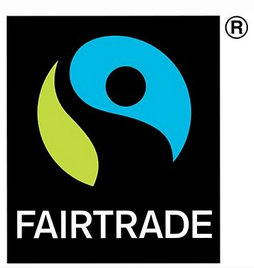
Product Certification Mark of International Fair Trade labeling Organization (FLO)
(except that the United States and Canada still use the unique Fairtrade certification mark, this stamp is applicable worldwide.)
Representative:
(1) Fair prices for producers
(2) safe working environment and prohibition of child labour
(3) supply chain transparency
(4) Sustainable production of environmental protection
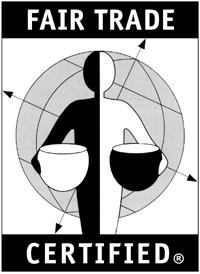
The Fair Trade Certification Mark of the United States and Canada
Fair Trade Theory and opposition
If you agree with the theory of liberalism, can't you agree with fair trade?
The reason why "fair trade" exists is to change the "unfairness" in the liberal market. As for why it is unfair, it is said that this is because agriculture in developing countries does not have the basic conditions of liberal economic theory. In the third World, vulnerable producers are in an immature market, there is no good market mechanism, it is difficult to borrow, information asymmetry. As a result, free trade does not bring wealth to small farmers in the third world, but becomes a form of exploitation. Such a situation can be described as a "market failure" in a free market, that is, the market has not achieved economic efficiency and cannot meet the public interest.
The opposition to Fairtrade ([Note 7]) mainly focuses on two arguments: first, opponents believe that Fairtrade is only a "subsidy" to other agricultural products ([Note 8]), which will lead to oversupply in the free market. Second, opponents are sceptical about whether Fairtrade producers do charge higher prices. Although there are many related academic studies, the results of the study are not consistent. Some studies confirm that small farmers who participate in fair trade are better paid and have improved in health care and education; however, some studies show that participation in fair trade does not benefit small farmers, fair trade is just a banner of nothingness. There is still no absolutely convincing conclusion as to where the extra fees paid by consumers have gone, whether they have really improved the lives of small farmers, or whether they have fallen into the pockets of middlemen, or whether all the misplaced resources have been spent on paying for fair trade certification.
The author thinks that the theory of fair trade can be explained by the externality of economics from another angle. The definition of "economic externality" is that when an enterprise or individual produces interests or harm to a third party in production or consumption, but the actor is not paid or compensated, the consequence of this activity is called external economic effect. will make the perfect competitive market inefficient.
When this group of vulnerable small farmers do not have enough food and clothing and have more access to land, the damage to the environment forms negative externalities (or "external cost" or "external diseconomy"). Negative externality is the harm to society as a whole, which makes the private marginal cost of production activities lower than the social marginal cost, that is to say, when the output increases by 1 unit, the real price paid by the whole society is higher than that paid by individual producers. In this way, the market equilibrium output (the output naturally obtained under the normal operation of the market) will be higher than the social optimal output (the total surplus reaches the maximum, that is, the output that maximizes the interests of society), and small farmers will make more uncontrolled overuse of land. Negative externalities can usually be solved by levying fees. For example, in order to solve the externality problem of excessive emissions from factories, the government can impose charges for each ton of carbon dioxide emitted by factories. When the levy is equal to the external cost caused by emissions, the private marginal cost will rise to equal to the social marginal cost, when the factory must pay the corresponding cost. At this time, the equilibrium output of the market will be equal to the optimal output, and the problem of externality will be solved.
Going back to the issue of vulnerable small farmers, taxing small farmers who are over-reclaimed seems to achieve the purpose of protecting land, but the prices received by small farmers are far lower than reasonable remuneration, and if fees are levied from exploited small farmers, it just makes the small farmers have no room for survival. Therefore, if aware consumers buy products at a reasonable "fair price" higher than the market price, to cover labor and environmental costs, and small farmers promise to protect the environment by sustainable production, a win-win effect should be achieved. This is fair trade, an attempt to help small farmers who suffer from market failure to find fairness and justice under a market economy.
Conclusion
Fair trade accounts for only about 1% of global trade, but the social value of fair trade is enormous and incalculable. Even though there are still voices of opposition, fair trade is still an irresistible world trend, which is already quite outstanding in advanced countries. Consumers no longer define the value of products by price alone. They learn to question and explore the source of products, because they respect land, producers and those who have the ability to make choices. In the United Kingdom, there are more than 4,000 Fairtrade certified goods, and in Hong Kong, the concept of Fairtrade is already very loud. In Taiwan, fair trade is still waiting for you and me to know, to explore, to identify, and to practice.
Honey, if you find that you are paying a higher price for products with Fairtrade certification, please cheer for yourself. Because you use the cheapest price to give a little more dignity to the vulnerable producers in the third world.
Important Notice :
前街咖啡 FrontStreet Coffee has moved to new addredd:
FrontStreet Coffee Address: 315,Donghua East Road,GuangZhou
Tel:020 38364473
- Prev
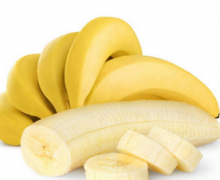
Can I have fruit in my coffee? how to make fruit coffee?
Professional barista communication, please pay attention to the coffee workshop (Wechat official account cafe_style) production method 1. Cut the bananas into small pieces and freeze them in the refrigerator. two。 Then pour the espresso into the cup, add the sugar and stir well. 3. Then drop in the lemon juice. 4. Put in ice cubes and put the frozen bananas into the coffee. Personal suggestion: if conditions permit, you can first drink in the cup.
- Next
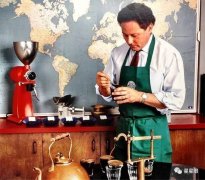
The cultural capital of cafes everywhere-- Paris Flower God Cafe Prokop Cafe
There are probably more cafes in Paris than any other city in the world. Walking in the streets of Paris, three steps a shop, five steps a pavilion, it is amazing. On a sunny day, people like to drink coffee under the Arbor and parasol along the street. At first glance, it is almost person-to-person, person-to-person, such as seen from a distance, more like a picture dotted on both sides of the street
Related
- What brand of black coffee is the most authentic and delicious? what are the characteristics of the flavor of the authentic Rose Summer Black Coffee?
- Introduction to the principle and characteristics of the correct use of mocha pot A detailed course of mocha pot brewing coffee is described in five steps.
- Which is better, decaf or regular coffee? how is decaf made?
- How much is a bag of four cat coffee?
- How about four Cat Coffee or Nestle Coffee? why is it a cheap scam?
- Which is better, Yunnan four Cats Coffee or Nestle Coffee? How about cat coffee? is it a fake scam? why is it so cheap?
- How about Cat Coffee? what grade is a hoax? which instant coffee tastes better, four Cat Coffee, Nestle Coffee or G7 coffee?
- Process flow chart of coffee making-Starbucks coffee making process what coffee tastes good at Starbucks
- The top ten best coffee beans in the world Rose summer coffee or Tanzanian coffee tastes good
- Yunnan four cat coffee is good to drink?_four cat coffee is a big brand? four cat blue mountain coffee is fake?

